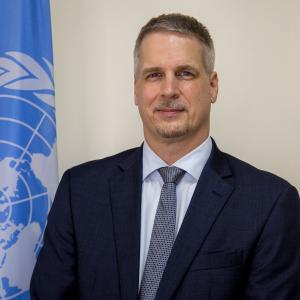It is my pleasure to speak at the occasion of the Second High-Level Panel on the Joint Programme “Advancing the SDGs by improving livelihoods and resilience via economic diversification and digital transformation.”
It is a moment to celebrate the resilience, ingenuity, and vision of our Pacific partners, who stayed the course through various challenges to experience the completion of this Joint Programme.
Let me begin by congratulating the participating governments and communities across the Pacific SIDS for your leadership and perseverance. In the face of a global pandemic, cyclones, and economic uncertainty, you have shown what it means to look ahead and invest in the future, particularly in digital transformation, employment, and inclusive growth.
The Joint Programme has proven what is possible when we focus on real needs and design solutions that are rooted in local contexts.
The independent evaluation of this joint programme confirms that the stakeholders across the region see this initiative as timely, relevant, and impactful.
Let me share just a few highlights:
- More than 1,800 people—many of them women, youth, and persons with disabilities—gained vital digital skills.
- Smart classrooms in places like Rotuma in Fiji and Malekula in Vanuatu are enabling remote learning and digital inclusion.
- Over 70 women- and youth-led MSMEs have been supported to grow, adapt, and formalize their businesses.
- And in Tonga, what started as a cookery apprenticeship has evolved into a national employment policy.
These are not isolated wins— they reflect a broader shift toward more resilient, inclusive, and future-ready communities.
We have also seen the power of partnership in action. Whether it is the Smart Islands work by ITU and UNOPS or ILO and UNESCO teaming up on entrepreneurship, this programme shows how much more we can achieve when we work across mandates, pool our resources, and pull in the same direction, in the spirit of “Delivering as One”.
At the same time, we acknowledge where we could have done better. The evaluation highlights that we could have done better in coordination and connecting the dots, leading to fragmentation and missed opportunities. In an era of shrinking budgets and rising expectations, we need to do better. Working together is not optional — it is essential, and we take the recommendation very seriously.
Our goals and efforts have always been to make a lasting impact. For that, any development intervention must be owned nationally and locally, coordinated effectively, and funded adequately. Governments must be co-creators and owners to create impact.
We are now five years from 2030. The clock is ticking. But if we stay focused on the fundamentals – on country leadership, smart collaboration, and inclusive delivery – we can still make the SDGs a reality in the Pacific, and I am proud to say that this programme has made a contribution toward this goal.
Let me end by thanking all of you:
- The governments of the Pacific SIDS for your trust, leadership, and vision.
- The development partners for supporting us .
- The many community workers, civil society leaders, and private sector partners who have brought this programme to life.
- And of course, to the UN team—ILO, UNESCO, UNODC, OHCHR, UNOPS, and ITU—for your dedication and delivery.
Let us build on what works, fix what doesn’t, and keep moving – together – toward a more inclusive, resilient, and connected Pacific.
Vinaka Vakalevu, Dhanjavaad, Thank You




